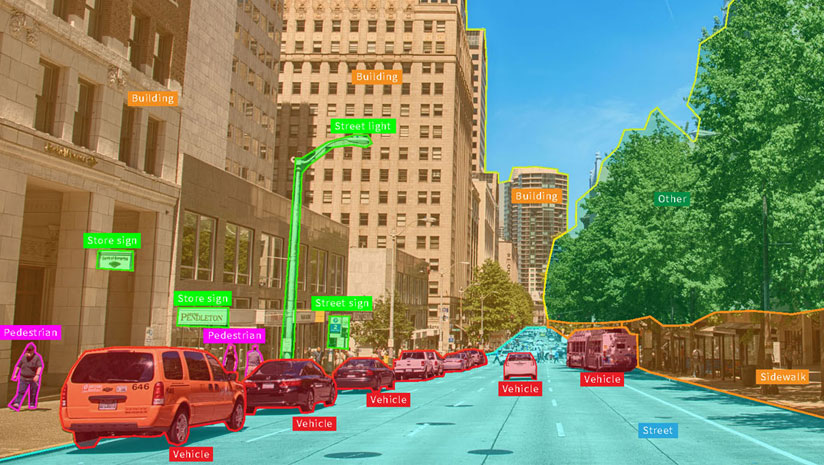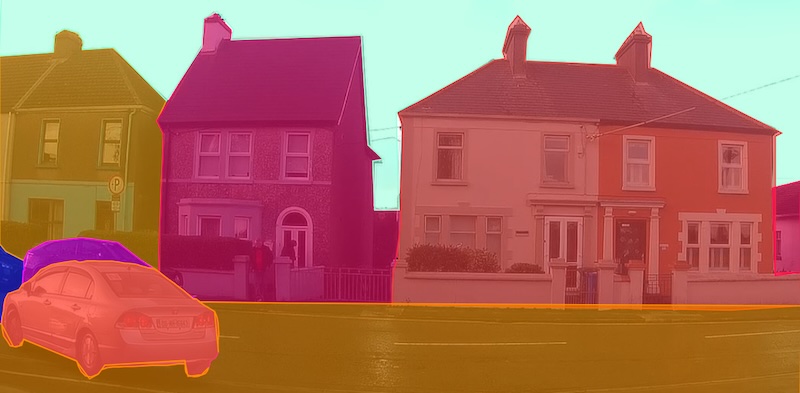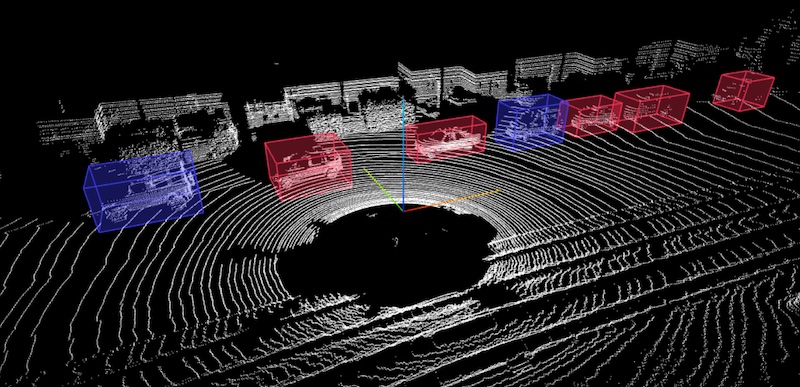
Data annotation for autonomous driving and ADAS applications encompasses labeling and annotating diverse data types gathered from sensors like cameras, LiDAR, Radar and GPS, which is crucial for training and validating machine learning algorithms to achieve different levels of autonomy.
The most valuable asset required for ML models training and validation is the large volume of rich and annotated data. Equipped with specialized annotation tools and a proficient workforce trained in complex annotation tasks, we uphold stringent quality checks to ensure tagging accuracy levels exceeding 95%. Our precision annotation services enhance your Artificial Intelligence (AI) and Machine Learning (ML) models by accurately annotating image or video data.
At Athang Robotics, we offer a wide array of data annotation services including image segmentation, object detection, classification, bounding box, and 3D cuboid annotation, tailored for customer specific needs.
Defining rectangular or cuboidal regions around objects of interest for precise localization. Our experts utilize the box annotation technique to delineate objects within a given image or video, facilitating the construction of datasets, which enables machine learning models to accurately identify and localize objects.

Polygon annotation is a precise way to annotate objects by selecting a series of x, y coordinates along its edges. Polygon annotation has pixel perfect precision whilst being highly flexible and adaptable to a variety of shapes.
In this technique, annotators accurately mark points along the precise edges of objects (such as the edge of a road, broken lane, vehicles, pedestrians etc.) to be annotated, irrespective of their shape.

A polyline is a sequence of connected line segments used to represent and approximate the shape of an object or region within an image. It marks limits such as lane detection and road markings. It defines boundaries for automated machines such as robots and vehicles to operate within a specified region.

Semantic segmentation is the process of labeling images at a pixel level, every pixel in an image/video is annotated with information and categorized into a different class or object. The goal is to produce a dense pixel-wise segmentation map of an image. To achieve high accuracy, it requires expertise and reliable tools.

LiDAR annotation involves the process of labeling and annotating point cloud data generated by LiDAR (Light Detection and Ranging) sensors. LiDAR annotation is essential for various applications such as autonomous driving, robotics, urban planning etc. It identifies objects in a 3D point cloud and draws bounding cuboids around the specified objects, returning the positions and sizes of these boxes.

It is used for identifying and labeling key points or landmarks on objects or human bodies within images or videos. It is commonly used in tasks such as object detection, pose estimation, facial recognition, gesture recognition, and action recognition.
It is used in a wide range of applications in fields such as autonomous driving, surveillance, augmented reality, healthcare, and more.

A Driver Monitoring System (DMS) is a safety feature in vehicles that uses sensors and cameras to monitor the driver's behavior and attentiveness while driving. It is used to enhance safety by detecting signs of driver distraction, drowsiness, or impairment and providing timely alerts or interventions to prevent accidents.
DMS mitigates road accidents resulting from drivers falling asleep by extracting critical driver information from facial landmarks such as drowsiness, eye gaze, distraction, and emotions. These meticulously annotated in-cabin images serve as valuable training data for machine learning models.
To develop a highly accurate driver monitoring system, annotation of facial landmarks such as eyes, head, mouth, etc. with accuracy and relevant metadata for blink detection and gaze estimation is essential.

A Pedestrian Tracking System is used to monitor and track the movement of different types of pedestrians in various environments, such as urban areas, transportation hubs, retail spaces, and public events. To build high-quality training data for pedestrian tracking systems, it is crucial to annotate pedestrians in various images with 2D bounding boxes.
Annotate images/videos frames of urban and street environments including cars, pedestrians, lamp posts, traffic signs, traffic signals etc. to facilitate object detection to build high-quality training data for developing CV models for autonomous vehicle.
Frame-by-frame capturing of the object of interest renders it discernible to machines, offering detailed machine vision perception crucial for autonomous vehicles to identify diverse objects including pedestrians, signboards, traffic signals, cyclists, vehicles etc. in motion on the road. This data is utilized for training machine learning models.

Semantic Segmentation of images/videos frame by frame which includes objects such as pedestrians, vehicles (cars, bicycles, buses), roads, sidewalks, driveways, lamp posts etc. for building high-quality training data for autonomous parking and driving scenarios.

Facial recognition technology identifies and authenticates individuals by analyzing their facial characteristics. Data annotation plays a crucial role in this process, involving the manual labeling and annotation of facial features and attributes within images or video frames to develop precise facial recognition systems. Initially, the boundaries of human faces are delineated using bounding boxes or polygons. Subsequently, key facial landmarks like eyes, eyebrows, nose, mouth, and chin are meticulously labeled to establish a comprehensive facial map.

Implementing stringent quality control measures to maintain annotation accuracy and consistency.
Tailoring annotation workflows to meet specific project requirements and annotation types.
Leveraging scalable infrastructure and efficient annotation tools to handle large-scale datasets.
Employing experienced annotators with domain knowledge in automotive and ADAS technologies.
Adapting to evolving project needs and accommodating changes in annotation requirements promptly.
Ensuring strict confidentiality and data security measures to protect sensitive information.